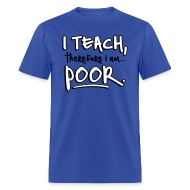The lesson/task/tip of Day # 7 in the Problogger 31 Day Challenge (yes, we're on Day #9, but I'm a little behind) was to give a little "link love" to another blogger. In other words, to link to and comment on a post from another site.
Last night, as I was looking through the sites that I frequently read, I came upon Mrs. H's post about her countdown to the TAKS test. Mrs. H is a Texas high school teacher, so she is counting down to a slightly more advanced version of the TAKS than the one my 3rd graders will be taking, but our goal is the same -- to kick the CRAP out of the TAKS. Er, I mean, to get all of our kids to score high.
Mrs. H says that one of her goals is getting her kids to recognize the difference between reasonable and unreasonable answers. I can so totally relate. What SHOULD be a simple thought process -- Hmmm, if I have 4 friends, and I want to share a bag of 20 peppermints with them, each friend is NOT going to get 80 peppermints!! -- is often anything but simple.
I tend to use the words "Does your answer make sense" more than "is it reasonable," mainly because there is a classification of 3rd grade math questions called "reasonableness." We started our lessons on Reasonableness questions today, with varying results.
If I might brag about my own education just a bit, I was an excellent math student in high school, I took graduate level math classes as a senior in college, I then took graduate level math classes as a graduate student, and then I used some pretty advanced math in my job as a thermoelectric design engineer for almost four years. However, I NEVER came across this type of "reasonableness" questions until I started teaching 3rd grade.
Here is an example of a Reasonableness question:
Mrs. Nestor bought 6 games for her son. The least expensive game cost $10, and the most expensive game cost $30. What is a reasonable total amount that she spent on the games?
My question is, who on earth doesn't track the exact total that they spent at the store?? Why do you need a "REASONABLE" total, when you can just add up the exact amounts, or round them to the nearest dollar and add??
The strategy of solving a problem like this involves finding a number in the middle of the range (10-30 dollars) and using that for each game. Furthing confounding things is the fact that the answer choices are always either ranges themselves ("between $100 and $150") or single numbers that are usually close to, but not exactly what the kids compute. So after all these months of telling the kids that, when taking a math test, if their answer doesn't match any of the answer choices, NOT to just pick the closest one, but rather to go back and find their mistake -- now we get to tell them, Oh yeah! If you see this word "Reasonable," THEN it's ok to pick the closest answer...
(For those of you wondering if the kids can just multiply 6 times $10 and 6 times $30 to find the range of answers, I just want to say. . . THAT WOULD BE FAR TOO EASY!!! Often times, using the extreme ends of the range yield an answer considered incorrect.)
I will say though, that after the first day of doing a brand new type of problem like this, the kids did pretty well with it. They certainly have the skill of finding a central number down, and hopefully this skill won't go out of their brains in two weeks. Like telling time seems to have done.
We also looked at a type of problem today we call "Missing info."
Try this example. Answer to follow tomorrow.
Mister Teacher has 15 sweaters and 22 shirts in his closet. What other information is needed to find the number of sweaters that are blue?
A) The total number of shirts and sweaters
B ) How many sweaters are white
C) How many sweaters are not blue
D) How many shirts are blue
I am an Amazon.com Affiliate, and I warmly invite you to shop using my store!
Try Amazon Prime 30-Day Free Trial
Join HBO Free Trial
Try Amazon Prime 30-Day Free Trial
Join HBO Free Trial
Tuesday, April 14, 2009
Unreasonableness
Subscribe to:
Post Comments (Atom)











6 comments:
Thanks for the link to my blog. You're right that we are fighting the same battle about learning whether or not answers make "sense". I'm not sure why this skill is so hard to teach. I once had a student tell me that the answer to a percent problem where the question was "How much was the original price of the car?" was $16.84.
This blog carnival looks like something you should check out. The "Teeaching K-6 Carnival."
Its url is
http://blogcarnival.com/bc/cprof_5838.html
Oops, the K-6 carnival is Australian.
Mrs. H, I don't understand it either, other than complete apathy.
Jason, right then, let's put another shrimp on the barbie!
I left teaching high school history after 15 years to start a little private school that went bust; I then ended up in corporate training. For the last 15 years I have been an equipment training consultant. This is a) to compare our opposite career paths, b) background to this comment:
Regards - "However, I NEVER came across this type of "reasonableness" questions until I started teaching 3rd grade."
Sheesh - How I dislike standardized testing in school. Anyways, if these people that invent these kinds of test items were to create tests in industry like that, they would be sued within an inch of their lives. Why? Because they have no connection to the real world; they are thus arbitrary and thus discriminatory.
I remember a training conference some 20 years ago where I learned about a program at TI to "upskill" workers, referring to those that had poor reading and math ability. He (the TI training manager) explained how a great deal of care was taken to identify vocabulary from actual manuals used at TI, and math skills that were required to perform actual tasks in the fab. From all of this, they created curriculum and tests. In the training world, this is called the "analysis" step. This effort made the programs legitimate both from a teaching/training point of view and from a legal point of view.
Perhaps I could say, The test items were completely "reasonable" - something hard to say about many so-called standardized tests.
Richard
30DBBB
Richard, I couldn't agree with you more.
Post a Comment